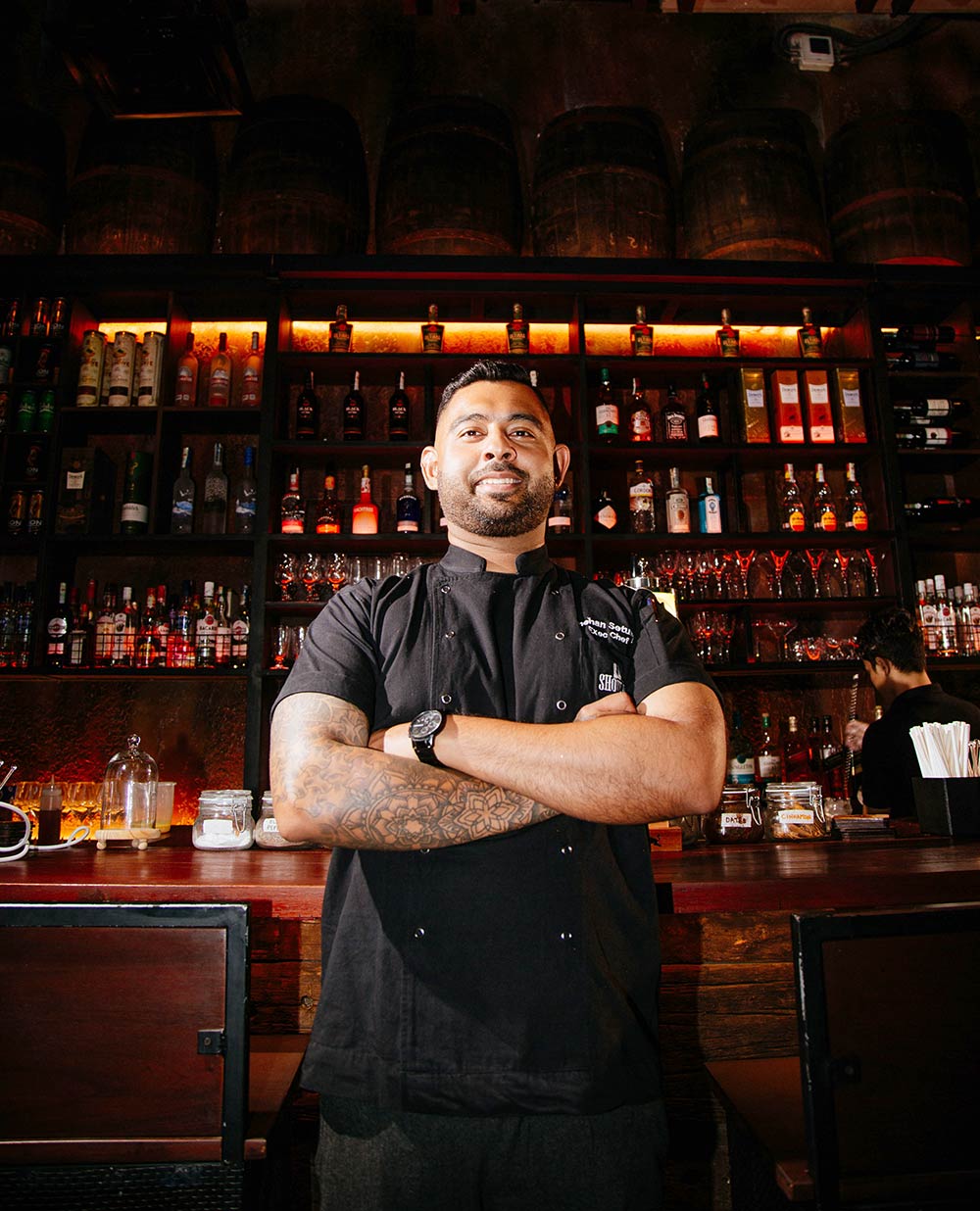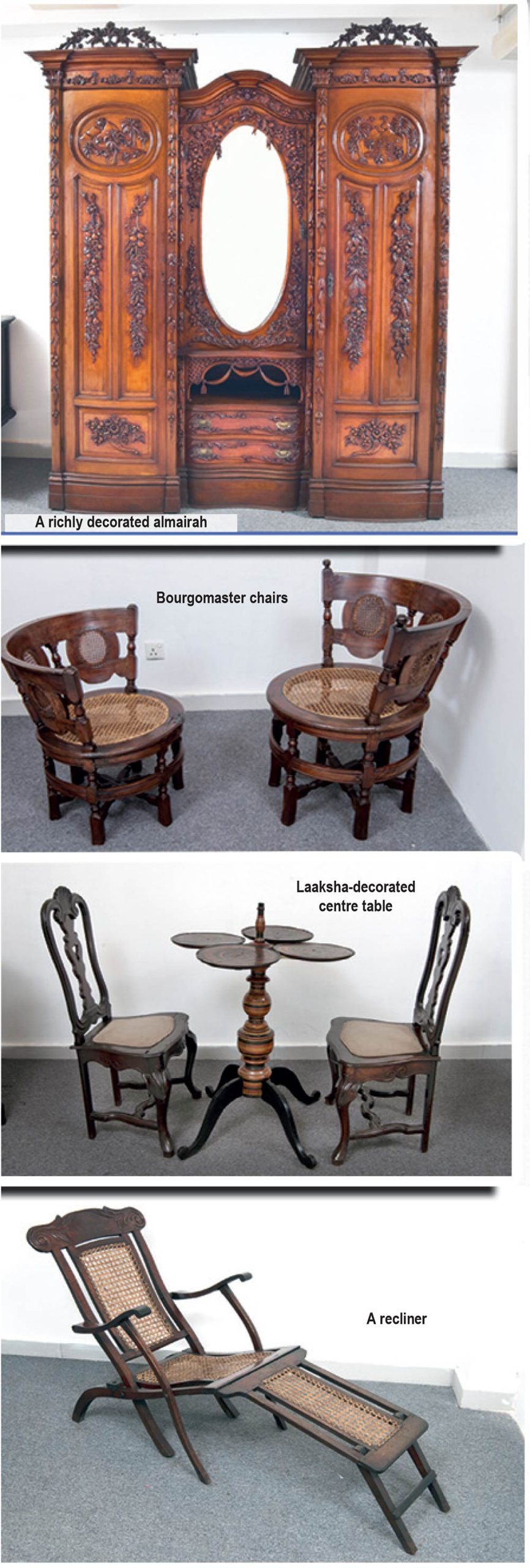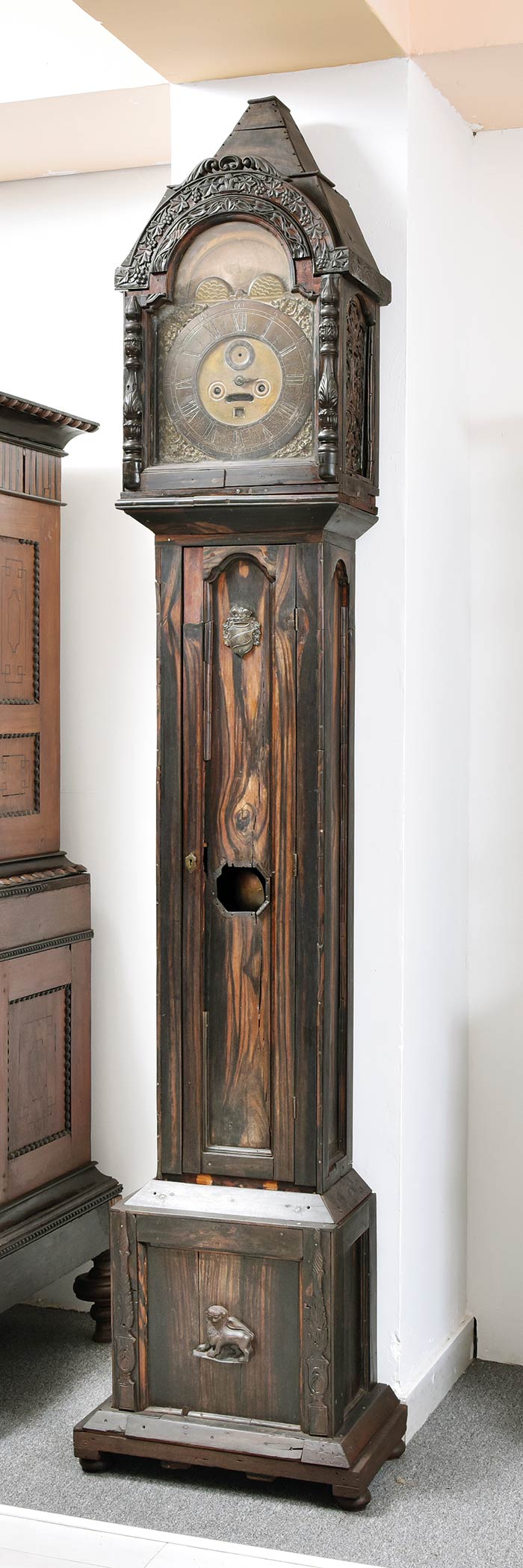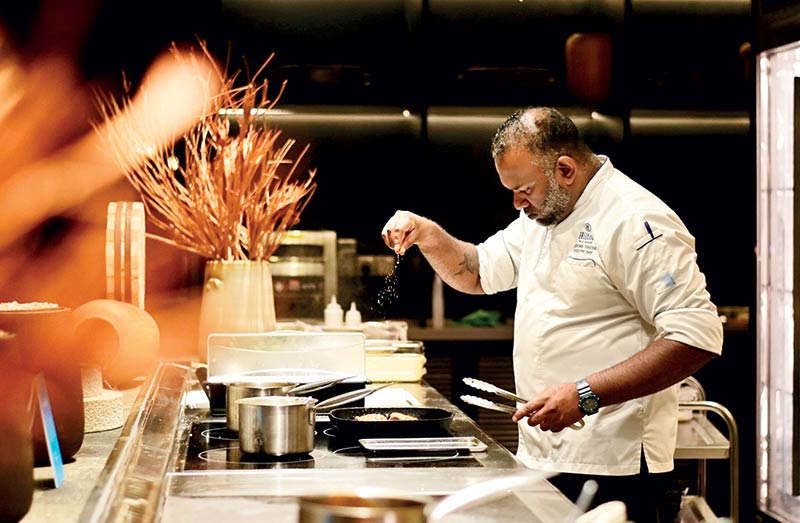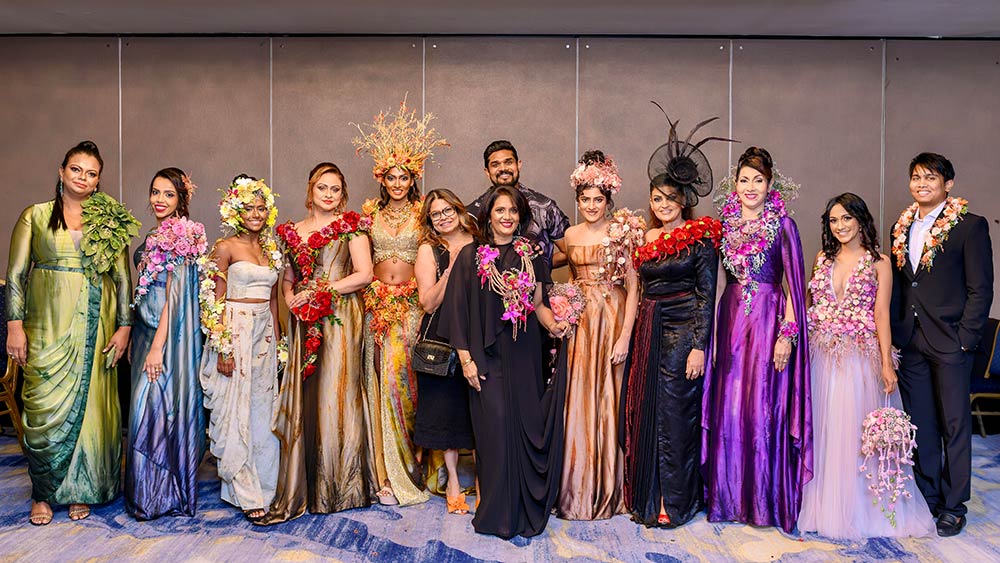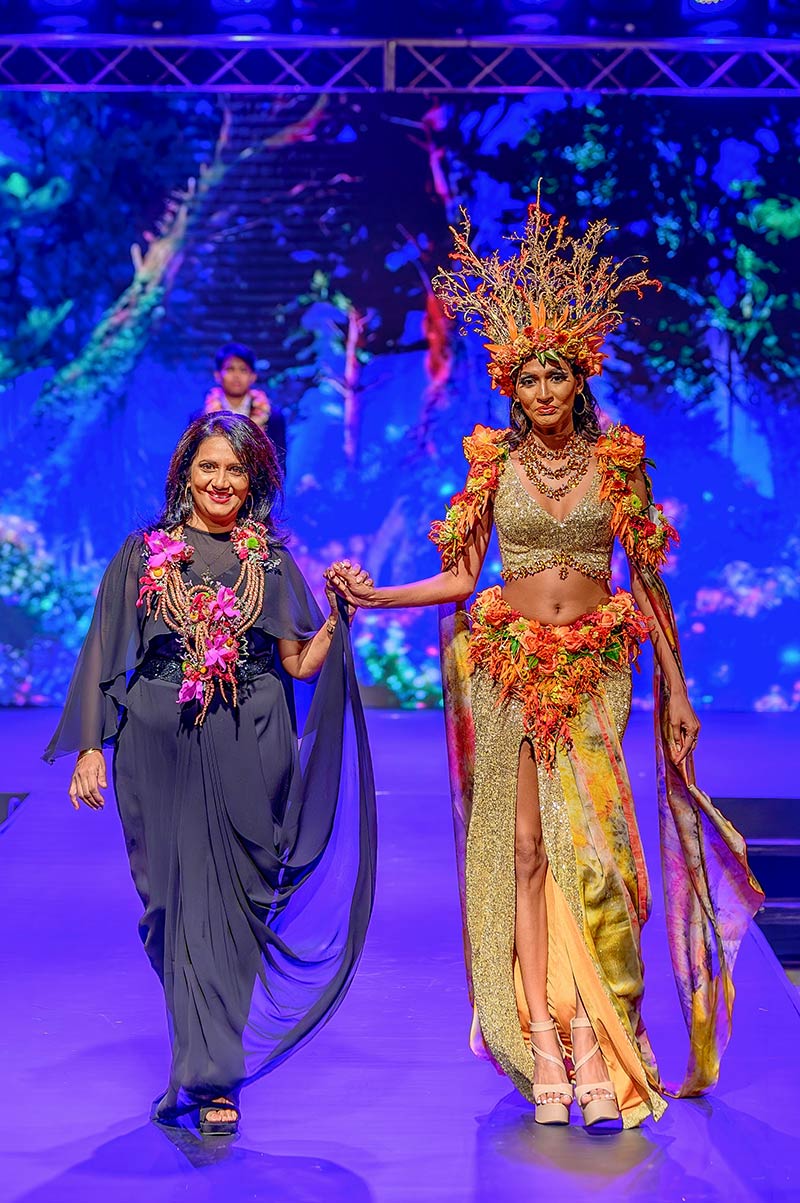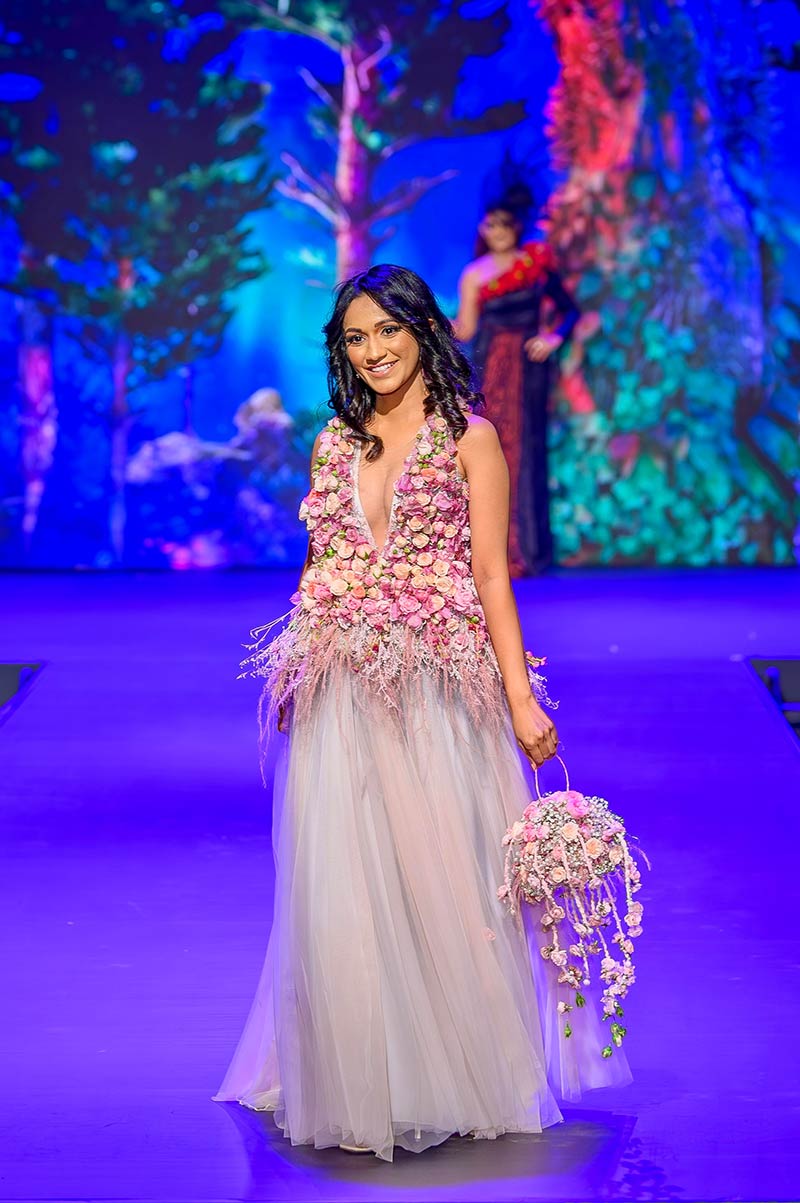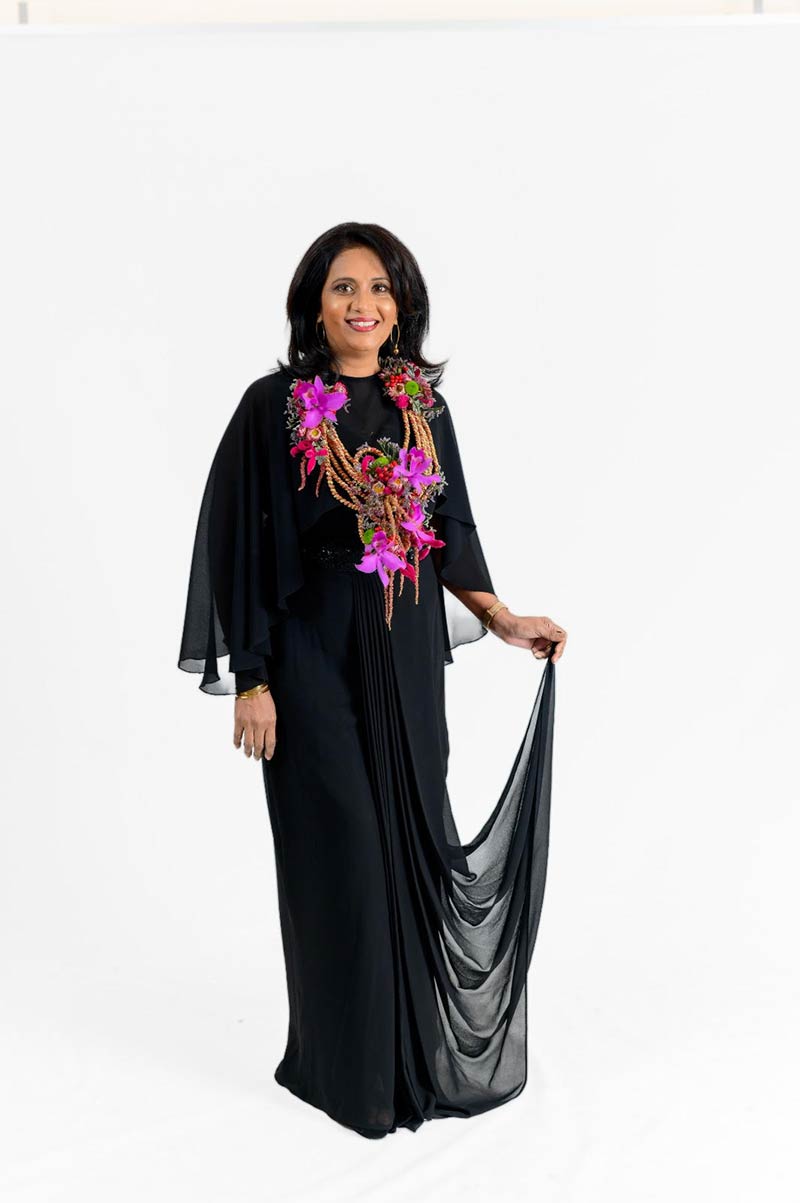Life style
New concept with Greek infused cuisine

 SHOULDERS by Harpo’s, opened recently , stands as a contemporary cocktail bar & restaurant, blending modernity with a rustic charm. It offers an extraordinary menu inspired by Greek cuisine and a distinctive approach to crafting cocktails.
SHOULDERS by Harpo’s, opened recently , stands as a contemporary cocktail bar & restaurant, blending modernity with a rustic charm. It offers an extraordinary menu inspired by Greek cuisine and a distinctive approach to crafting cocktails.
It is conveniently situated at level 1 of the Havelock city promenade, with easy access and ample parking said a press release.
The release said SHOULDERS is a part of Harpo’s vision for opening new dining concepts and is ably managed and operated by Harpo’s Café’s & Restaurants , ensuring quality service and exceptional food and drinks that it has made a name for .
The menu pays homage to the rich flavors of Greek cuisine, enhanced with the vibrant essence of Sri Lankan ingredients to deliver an unforgettable dining experience. Kudos to the Executive Chef Shehan Setunga (aka Juppe) where each dish is a masterpiece that is expertly crafted by him. Shehan has made a name for himself in Melbourne Australia as a renowned Sri Lankan chef, and is now one of the partners at SHOULDERS and has dedicated himself to ensuring memorable dining experience with each visit.
The release also said there is a special lunch and dinner menu including great starters such as flaming saganaki cheese , cheesy garlic pita bread ,taramasalata with whipped cod roe dip, lunch with SOUVLAKI BAR (GREEK WRAPS)with a choice of flaming chicken, zuchchini , pork belly, mutton or lamb and a lunch board . The mains include Moussaka and other exceptional Greek favorites. The dessert selection will keep you mesmerized with the flavors and creativity.
The cocktail bar is an adventure for your palate with a range of signature cocktails. Offers a perfect blend of creativity and craftsmanship to enjoy with an exceptional range of snacks and starters that transcend the ordinary.
Entertainment on wed- sun from 7pm to enjoy a relaxed drink in the promenade or before dinner.
Monthly events include “Let there be GIn’ Sundays once a month and other promotional events which are well patronized by all.
SHOULDERS also offer s a choice of menu options for catering for corporate and private cocktails and dinners for 10 pax and more , with quality service..
Life style
A synthesis of native craft and European design
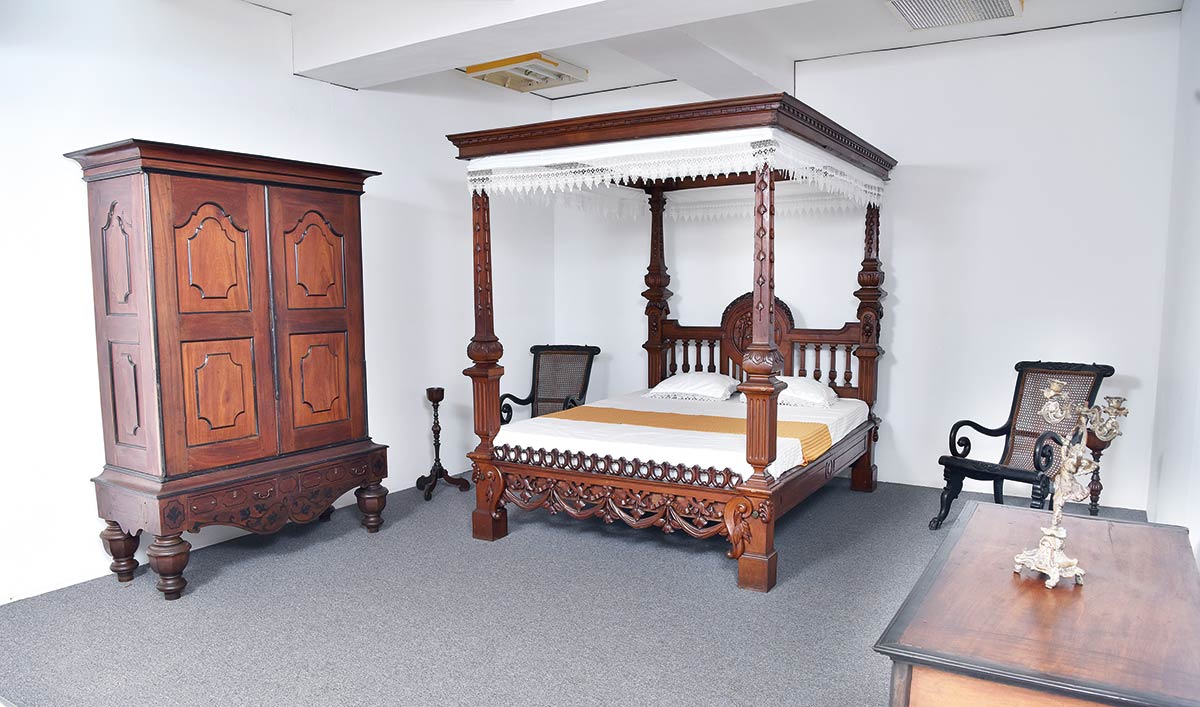
Colombo National Museum’s new Furniture Gallery which displays a fine collection from the Kandyan kingdom and the colonial times, is soon to be opened to the public. We had a sneak-peak at the new gallery’s intricately designed ebony almirahs, four-posters, palanquins from the Kandyan times, cradles and Burgomaster chairs from the Dutch times and much more…
BY RANDIMA ATTYGALLE
The first impression of the Colombo National Museum’s new Furniture Gallery is that it’s a synthesis of the indigenous craft and that of the European genus. The 17th century Dutch grandfather clock which stands tall at the entrance to the gallery is juxtaposed with the traditional Kandyan laaksha-embelished centre tables. The richly ornamented Kandyan palanquins and finely crafted chairs inspired by the Dutch tradition, equally speak for the skills of the Lankan artisan who could navigate different schools of art with ease.
A luxury of the nobility
Until the mid-20th century, the use of furniture in Lankan homes was minimal. Except for small three-legged benches, there were hardly any pieces of furniture found in ordinary households. Even guest seating was arranged by laying a mat on the outside verandah. The use of furniture was accepted as a luxury by the royalty, nobility and the priests. Ananda Coomaraswamy in his work Mediaeval Sinhalese Art notes that, ‘none but the king was allowed to sit upon a chair with a back.’ The chairs that we are familiar with today did not exist here at home in the early 16th century. Coomaraswamy further writes of a beautiful chair dedicated by Kirti Sri Raja Sinha preserved in the Asgiriya pohoya-ge which is painted and inlaid with ivory. Paintings at Degaldoruwa also depict a number of types of stools and chairs. ‘Ordinary tables, were not in general use, though mentioned by Knox (Robert Knox) among the King’s private treasures, most of which he had obtained from wrecks or were gifts brought by ambassadors,’ says Coomaraswamy.
Colonial influence
Most of the furniture we are familiar with today such as chairs, tables, bedsteads and wardrobes were first introduced to the island by the Portuguese in the 16th century. The native words putuwa and almariya (derived from the Portuguese word armario) are of Portuguese origin. Later, the Dutch colonization of the coastal areas of the island gave birth to a rich furniture-making legacy.
In the article, ‘Colonial Dutch Furniture’ by E. Reimers published in the Journal of the Ceylon Branch of the Royal Asiatic Society (RAS) of 1937 (Vol XXXIV), the writer states that the ‘Dutch with their characteristic caution and attention to details should have provided for their domestic needs in their Eastern colonies’ and have probably brought some of their master carpenters to the island. Local carpenters probably became their understudies.
R . L Brohier in his book, Furniture of the Dutch Period in Ceylon documents: ‘Large number of Porto-Sinhalese and others from the Sinhala community whose ancient trade was carpentering found employment in the Dutch winkels or workshops in Ceylon. It was from the Dutch that the ‘Moratuwa Carpenter’ and the Low country Sinhalese generally learnt the art of furniture-making and even up to the British period of occupation in Ceylon duplicated the genuine Dutch models and preserved many of the Dutch patterns.’
Superior Ceylonese furniture
Brohier further notes that, ‘the period which the Dutch were in Ceylon synchronized with this golden age of furniture development in Europe-claimed by authorities to have been a period of artistic activity never equaled before or since in the history of furniture.’ The assortment of chairs, settees, book cases and wardrobes found in the Colombo Museum’s new gallery is a testimony to this legacy the Dutch.
The Burgomaster chair type which was first made in the Netherlands in about 1650 and the subsequent Queen Anne Style type and those of the rococo style (which are found in the Wolvendaal Church in Colombo) are among the interesting chairs found in the gallery. Jan Veenendaal in his book, Furniture from Indonesia, Sri Lanka and India during the Dutch Period, observes the distinction between the chairs from Sri Lanka and Indonesia in the 1740s. ‘The difference between chairs from Sri Lanka and Indonesia is very marked during this period. In Sri Lanka, the Dutch style was followed more assiduously, Chinese and of course Indonesian influences on methods of ornamentation are completely absent.’ Dr. Joseph Pearson in his writing in RAS (Ceylon) Vol XXXI, 1938 makes a distinction between old Javanese and Ceylonese furniture: ‘Generally speaking, the types of old furniture in Java has characters of its own…. The furniture is frequently overloaded with rough carving and as a rule is inferior to Ceylon furniture which is dignified in style and restrained in motif.’
Clock of the last Dutch Governor
The grandfather clock in the gallery is indeed a show-stealer. Brohier in his work provides an extensive account of it. Dating back to 1710, the clock it claimed to have been the property of the last Dutch Governor of Ceylon, John Gerard van Angelbeek. Subsequently, it passed into the possession of Leslie de Saram who was a connoisseur of antiques in 1936. He then gifted it to the University of Ceylon in memory of his mother. Brohier recalls having seen this iconic article on a visit to the university in 1963 when the clock was still intoning ‘tick-tock’. This valuable antique was ‘indecorously destroyed beyond repair together with other articles of furniture in the student riots of December 1965,’ records the historian.
Local timber and art
The laaksha or traditional Sri Lankan lacquer work has a deep-rooted history. Matale is the best-known region in the island for this art. The legend has it that this art was introduced to the island with the arrival of Theri Sangamitta who brought the sapling of the sacred ‘Sri Maha Bodhi’ tree, accompanied by numerous artisans who introduced their respective traditions to the island. Ananda Coomaraswamy describes the Sinhalase lac-work to be of ‘great brilliancy and gaiety of colouring.’ He also notes that most of the work is from a decorative point of view. The laaksha-adorned centre tables found in the gallery mirror this brilliance and add colour to the place.
In the selection of material for their earliest 17th century furniture, the Dutch appear to have shown a marked preference for dark or coloured woods, mainly ebony, records E. Reimers in his contribution to RAS (Ceylon) of 1937 (Vol XXXIV). ‘We may imagine that the Hollander’s imagination ran riot when he first came out to the East and saw rich varieties of woods which the virgin forests of Ceylon and Mauritius afforded.’ Among the other local timbers sought after by the Dutch were Calamander, (which was found in the wet forests of the Southern provinces and in the wilderness of Sri Pada, recklessly felled by the Dutch and the British and is almost extinct today), Nedun, Satinwood, Tamarind, Kumbuk, Jak, Halmilla, Suriya, Kohomba and Mara.
Public participation
The soon to be opened new Furniture Gallery at the Colombo National Museum is a fine representation of the cultural intersection of Sri Lanka, says the Director General of the Department of National Museums, Sanuja Kasthuriarachchi. “The fine collection of furniture we have as exhibits ranging from the Kandyan era to the British period in the island reflects not merely the colonial influence on the furniture-making in the island but also the fact that our traditional carpenters and artisans were naturally endowed with the skill, given their long-standing association with wood crafts.
“The Kandyan Kingdom in particular is associated with an architecture and crafts dominated by wood. This inherent skill would have probably driven our carpenters of the colonial times to ably grasp the European styles,” remarks Kasthuriarachchi who invites history-lovers to enjoy the exhibits and revisit a rich tradition. “We also welcome unique articles of furniture as gifts from the public to the gallery as means of enabling a richer experience to museum visitors,” she added.
(Pic credit: Department of National Museums)
Life style
Hilton unveils festive experiences across Sri Lanka
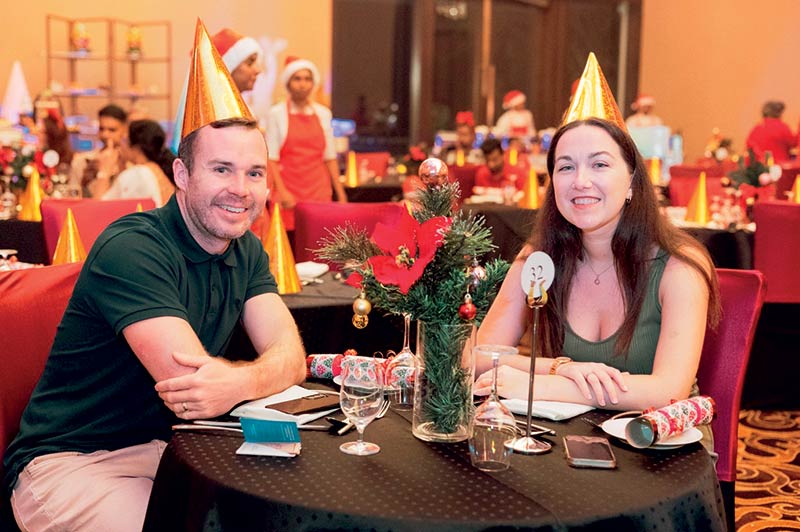
Hilton Sri Lanka is set to welcome the holiday season with a vibrant array of festive experiences across its esteemed properties. This year, the festivities are carefully crafted to evoke the warmth of home, where traditions are celebrated and new memories are created. Spanning multiple hotels—from the bustling city of Colombo to the serene landscapes of Yala and Weerawila—Hilton Sri Lanka’s holiday offerings promise unique celebrations infused with local flavor and global flair said a press release
Hilton Colombo
Hilton Colombo began the festive season in style with a Christmas tree lighting ceremony on 13 November 2024. The ceremony was attended by . Manesh Fernando, Area General Manager of Hilton Sri Lanka and General Manager for Hilton Colombo. Embracing the theme “Home for Christmas,” Hilton Colombo’s dining establishments will host a vibrant lineup of holiday events, including festive choral performances, fine dining experiences, and seasonal treats.
Adding to the holiday ambience, live performances will run from De The release also said
Hilton Colombo Residences introduces ‘Hilton Holidays,’ a series of festive experiences designed for families and business gatherings alike. From 1 – 29 December 2024, the property will offer a blend of holiday dining, festive brunches, and exclusive treats followed by live entertainment.
Adding a festive touch to the atmosphere, Choro Calibre will perform live every Friday and Saturday from 7:00 pm to 10:30 pm in the lobby, every Friday evening at Level3, and during the BBQ brunches every Sunday. Special performances are also scheduled on Christmas Eve and Christmas Day from 7:00 pm to 10:30 pm in the lobby, ensuring guests are surrounded by music and cheer throughout the holiday season.
DoubleTree by Hilton
Weerawila Rajawarna Resort
DoubleTree by Hilton Weerawila Rajawarna Resort invites families to create unforgettable memories with a schedule packed with holiday activities for all ages. Themed ‘A Festive Escape,’ the festive plan includes highlights such as a Grand Christmas Eve Gala, children’s crafting events, poolside activities, and a delightful Christmas lunch and dinner. The resort’s holiday programming is designed to bring loved ones together while enjoying the natural beauty of the surroundings.
The Grand Christmas Eve Gala at the Grand Rajawarna Ballroom promises an evening to remember tary access to the resort’s pristine pool, and an evening indulgence of a delectable slice of cake served with tea or coffee.
Hilton Yala Resort
Set against the stunning backdrop of Yala National Park, Hilton Yala Resort offers guests an immersive festive experience amidst nature. Executive Chef Jerome Tissera has curated a holiday dining experience that includes Christmas Eve dinner, Christmas Day breakfast, and special themed meals throughout the season. Guests are invited to immerse themselves in a unique blend of nature, fine dining, and Sri Lankan warmth with Holiday in the Wild, a celebration crafted to connect with the wilderness and embrace the festive spirit.
Life style
Samitha’s incredible floral journey
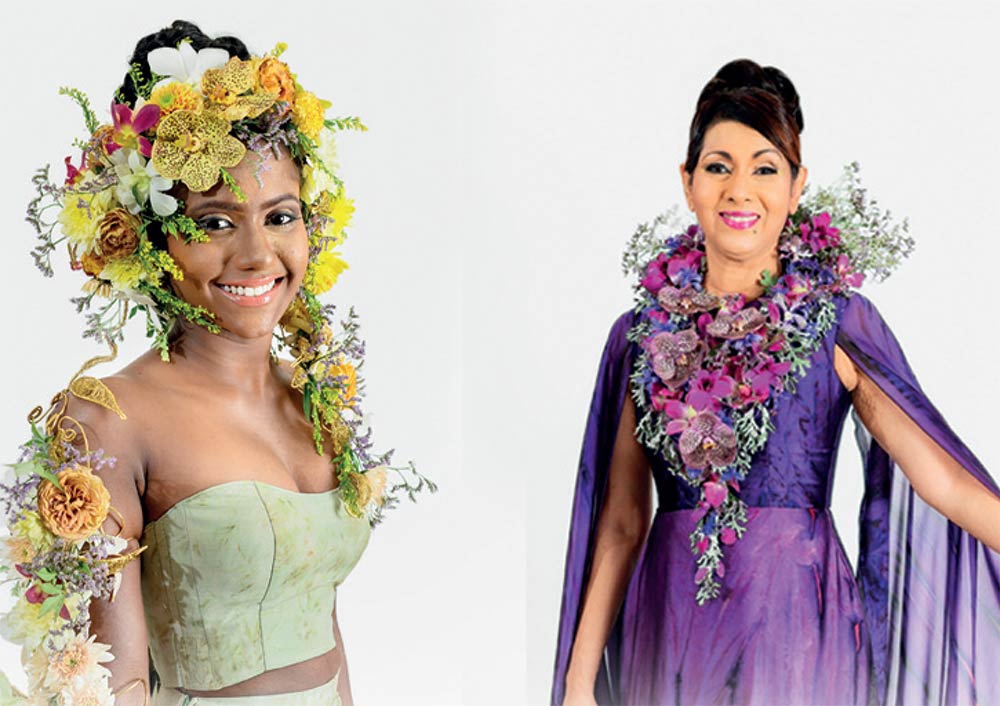
Award-winning floral designer Samitha Wijayasekara, owner of The Wedding Flowers Gallery Pvt Ltd. and a proud WCIC member, recently presented a stunning collection of floral wearable art at WCIC Ramp Up 2024. Using a unique wire technique, the fresh flower designs were paired with garments by fashion designer Charith Wijesekera. The event, produced and directed by Lou Ching Wong, took place at the Hilton Colombo. Dress designer: Charith Wijesekera. Photos: Achira Jayasinghe
Samitha Wijayasekara, founder of The Wedding Flowers Gallery (Pvt) Ltd., is recognized as one of Sri Lanka’s top floral designers. Her journey into floristry began unexpectedly after starting her career in accountancy. Fascinated by the beauty of flowers from a young age, Samitha transitioned into floristry, founding her business in 2008. Over time, The Wedding Flowers Gallery became renowned for its creative and bespoke floral designs for weddings and events.
Samitha’s commitment to excellence has earned her numerous accolades, including:
= 2015: Women’s Entrepreneur of the Year (Bronze Award)
= 2016: National Excellence Award, 2nd Runner-Up (Medium Category)
= 2016: Entrepreneur Award, Western Province Merit Award
= 2023: Sri Lanka Wedding Awards (SLWA) – Appreciation Award
Her international training, including courses with renowned floral designers such as Wendy Andrade, Gregor Lersch, and Pirjo Koppi, has further solidified her reputation. In 2015, she became the first Sri Lankan member of the World Flower Council and introduced “Wearable Floral Art’ to Sri Lanka, blending fashion with floristry in a sustainable way.
-

 Sports3 days ago
Sports3 days agoPathum will become world’s best batter, says Jayasuriya
-

 News6 days ago
News6 days ago‘Gas Cylinder’ explodes; Ranil flays NDF Secy. for submitting Ravi’s name
-
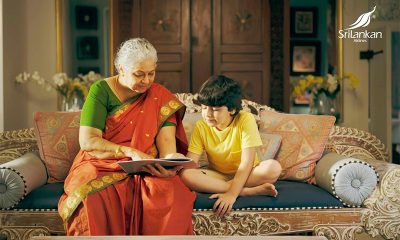
 Midweek Review5 days ago
Midweek Review5 days ago‘Ramayanizing’ Sri Lanka by Courtesy of SriLankan Airlines
-
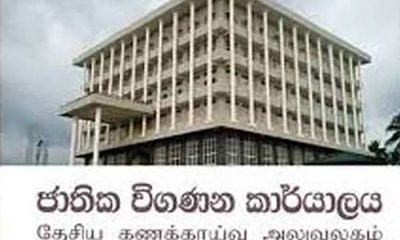
 News2 days ago
News2 days agoAbout 1,000 permits issued to SL migrant workers for electric vehicle imports misused
-

 Sports6 days ago
Sports6 days agoMaking batting compulsory for bowlers has worked – Theekshana
-
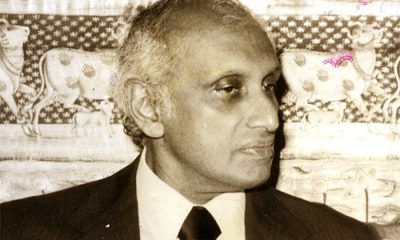
 Features5 days ago
Features5 days agoShould we go back to build another Southern Order?
-

 Sports4 days ago
Sports4 days agoSri Lanka’s cricket revival continues
-

 Editorial6 days ago
Editorial6 days agoClose that smuggling tunnel

